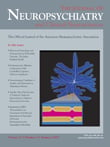To the Editor: Autism is a biological disorder with a clinical onset in the first years of life that persists, to varying degrees, throughout the lifetime. It is characterized by abnormality in reciprocal social interaction, communication, and language development as well as by repetitive and stereotyped behavior. These abnormalities are caused by defects in multiple areas of the brain. Although intense effort has been invested in discovering a physical cause for the etiology of autism, no one has yet succeeded. We are still a long way from claiming the knowledge of causality.
1 Reduced generalization has been noted in autism for many decades.
2 This key feature of people with autism can also be viewed from the perspective of artificial neural networks.
Artificial neural networks have been around since the seminal papers of McCulloch and Pitts
3 and Rosenblatt.
4 Many neural network models have been proposed and investigated. Artificial neural networks are built by using simplified models of biological neurons. The pattern of connections between the neural units is most often established via learning rules and gives the network its ability to compute complex functions and to develop emergent behaviors.
One problem that occurs during neural network training is overfitting—the error on the training set is driven to a very small value, but when new data are presented to the network, the error is large. In other words, the network has memorized the training examples, but it has not learned to generalize and find the true answer in new situations.
This overfitting in artificial neural networks is, to some extent, similar to what happens in the biological neural networks of the brain in people with autism. In other words, the interest that autistic persons show toward lawful and highly predictable systems
5 produces a situation that is analogous to overfitting. When overfitting happens in artificial neural networks, the network learns precisely the relationship between inputs and outputs in the training set, but it does not have the ability to adapt to novel circumstances. Consequently the generalization ability of the network is poor.
A memorizing procedure rather than learning happens in the brain of an autistic patient. Therefore, such a patient is not capable of incorporating prior knowledge in the learning process. This is in accordance with change resistance, need for sameness, and low generalization features of autistic persons.
Taking this similarity between artificial neural networks and autism into consideration may lead to novel learning procedures for these patients. For example, increasing the training set (i.e., the different situations to which the patient is exposed) and/or early stopping (i.e., reducing the intense concentration on training experiences) may be proper strategies in managing autistic patients.

